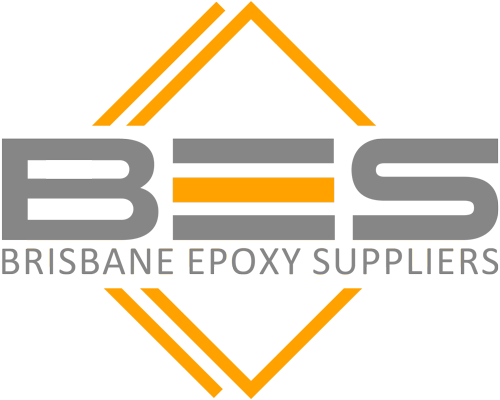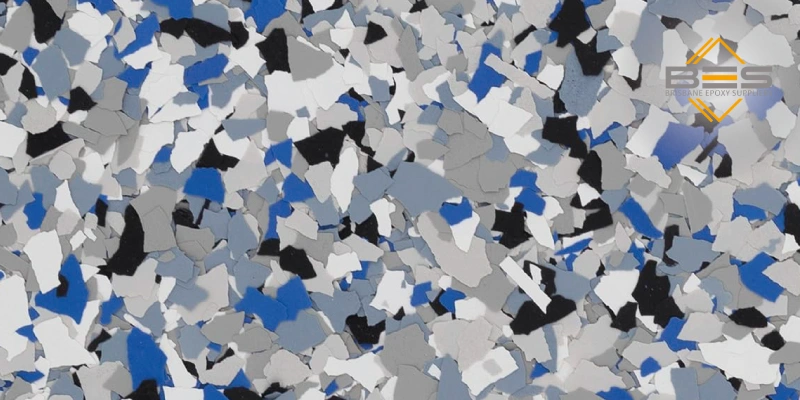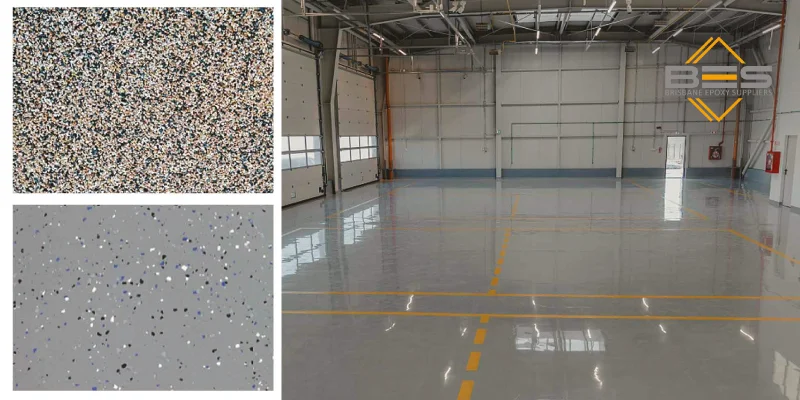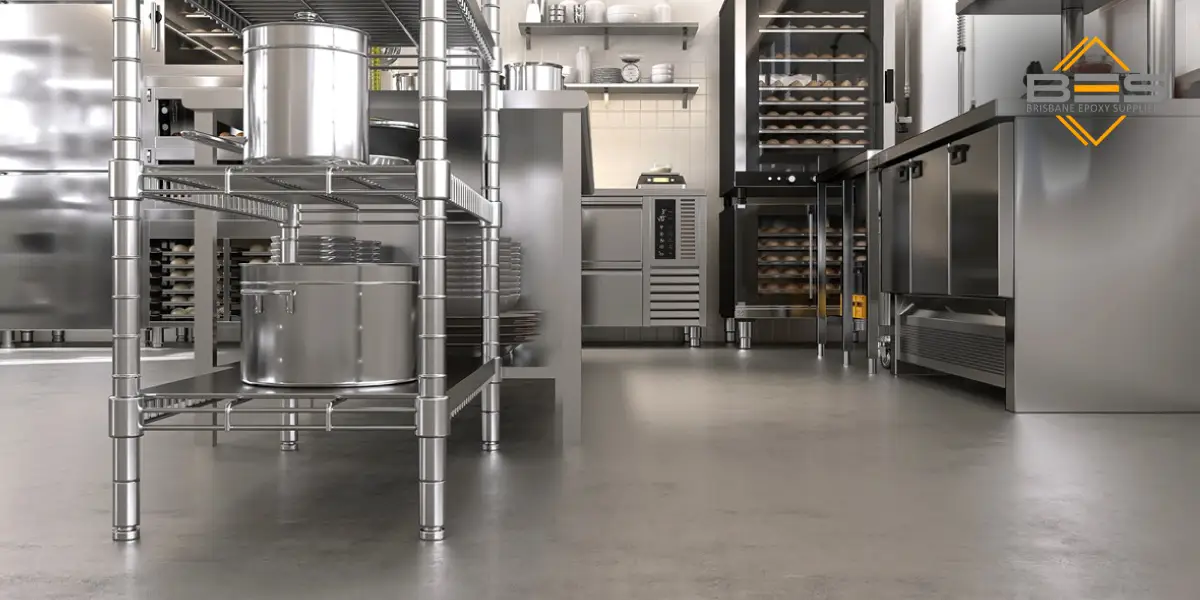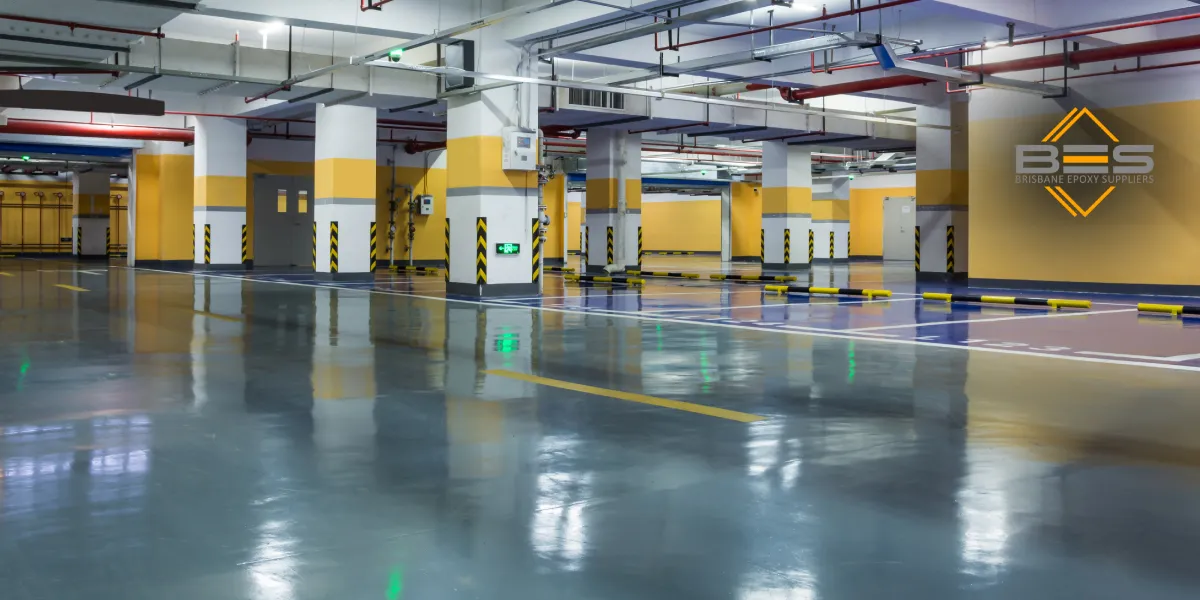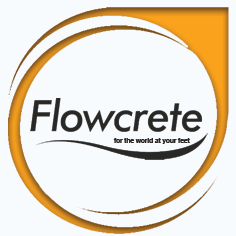Epoxy Flake Floor: Complete Guide to Durable & Decorative Flooring
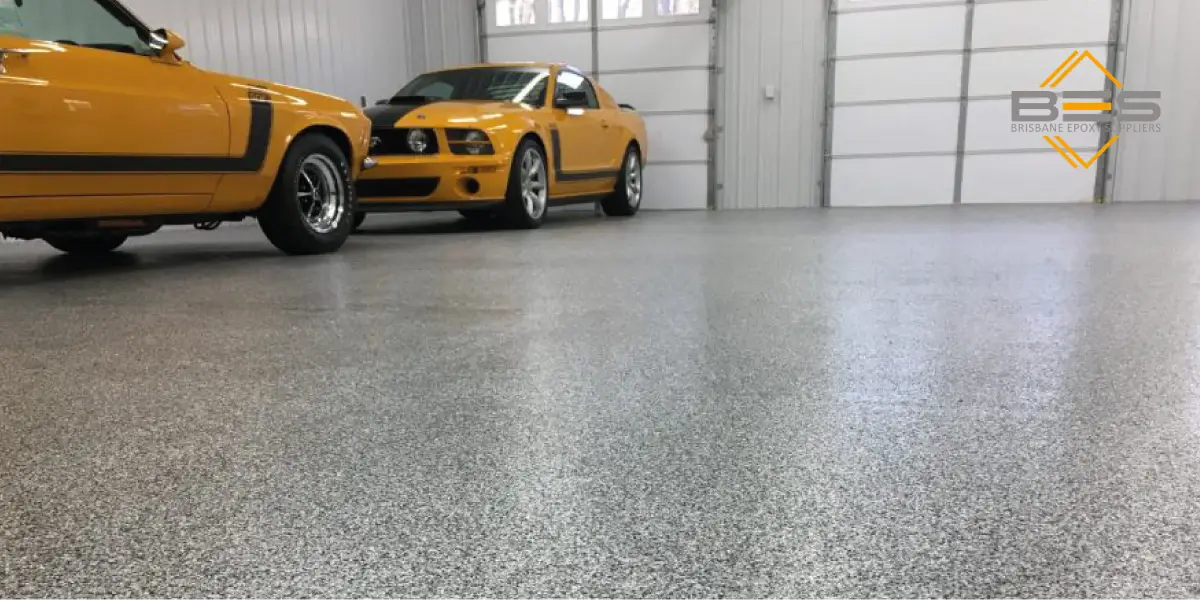
An epoxy flake floor could be exactly what you need. This system upgrades ordinary concrete into a strong, visually appealing surface that requires minimal upkeep. Thanks to their durability and customizable design, these floors are ideal for both residential and industrial environments, especially garages and workshops.
In this guide, you’ll discover everything you need to know about epoxy flake floors, including how they’re made, their benefits, how they’re installed, and what to expect in terms of cost. Learn how this flooring solution protects your concrete and adds long-term value.
What Is an Epoxy Flake Floor?
This decorative system does more than just coat the surface — it enhances both function and aesthetics.
Components and Structure
Flake epoxy flooring is applied in multiple stages, each layer adding to its durability and design:
- Primer/Basecoat: The process begins with an epoxy primer for optimal adhesion, followed by a pigmented base layer. “The pigmented layer sets the base tone and provides the adhesive surface needed for the flakes to stick.”
- Decorative Flakes: While the base is still tacky, vinyl or polymer flakes are evenly broadcast across the surface. The amount and style of these chips influence the overall look, whether subtle or bold.
- Topcoat(s): Once the flakes set and any loose particles are removed, one or more clear topcoats (such as epoxy, polyurethane, or polyprotic) are applied. These layers lock in the flakes, improve resistance to wear and chemicals, provide UV protection, and deliver the desired gloss or matte finish.
How It Differs from Regular Epoxy Floors
The key difference lies in the flakes. Standard epoxy floors provide a solid color finish using just epoxy coats. An epoxy flake floor incorporates the decorative flakes between the basecoat and topcoat. This results in enhanced visual appeal with endless color variations, improved surface texture aiding slip resistance, better camouflage for minor concrete flaws, and often a thicker, more durable overall system compared to plain epoxy coatings.
Key Benefits of Epoxy Flake Flooring
Using epoxy flake floors offers numerous important benefits.
High Durability and Strength
This flooring is tough. The mixture of epoxy resins and flakes with a durable topcoat forms a surface that resists impacts, heavy use, vehicle loads, chipping, and surface wear. This flooring stays strong through hard work while preventing oil, gas, and cleaning chemical damage.
Decorative and Customizable Appearance
Epoxy flake floor delivers exceptional visual appeal. You can design your epoxy flake flooring however you want, thanks to manufacturers who offer many different colored and sized flakes to match your vision. The possibilities for personalization are vast; exploring glitter and decorative flake types shows just how unique these floors can be.
Slip Resistance
Epoxy floor flakes create better traction than smooth surfaces, especially when the floor is wet. Epoxy floors naturally resist slipping, which protects people from accidents in their garage, workshops, kitchen, and walkways. Traction can be enhanced further by adding special materials to the surface when needed.
Low Maintenance and Easy Cleaning
The topcoat surface forms a strong barrier that prevents any type of dirt or liquid from passing through. You can clean the surface easily by using a broom and a mop with a gentle cleaning solution. The seamless design helps keep the surface more hygienic, as there are no joints where mold or bacteria can develop.
Best Places to Use Epoxy Flake Floors
The tough and attractive nature of epoxy flake floor makes it ideal for installation in various room types.
Residential Areas (e.g., kitchens, basements)
Flake epoxy floor systems can be used throughout a home because they defend against moisture and improve looks in basement spaces and serve as durable coatings in laundry rooms, utility rooms, and kitchens. They protect the space from regular use while making the home look better.
Garage Floors
This remains the prime application. Garage floors are exposed to tough conditions such as heated tires, spilled chemicals, and frequent impacts. A flake-coated epoxy surface offers a tough, low-maintenance finish that resists staining and keeps the space looking clean and well-lit. A quality garage floor epoxy flake solution adds significant value and usability.
Commercial & Retail Spaces
Showrooms, stores, salons, cafes, and schools benefit from flooring that withstands high traffic while looking professional and clean. An epoxy flake floor offers both customizable designs and low maintenance needs, potentially reducing long-term costs. Specialized flake systems for outdoor tile areas like covered entryways may use similar technology with UV-stable topcoats.
Industrial Kitchens and Workshops
For environments needing hygiene, safety, and chemical resistance, epoxy flake flooring is ideal. The seamless, easy-clean surface, durability, and enhanced slip resistance suit commercial kitchens, labs, and workshops perfectly.
How Epoxy Flake Floors Are Installed
Proper installation is key to the longevity and performance of an epoxy flake floor. Although it’s possible to install it yourself, hiring a professional usually ensures a higher-quality and longer-lasting outcome.
Surface Preparation (Grinding, Cleaning)
This is non-negotiable for success. The concrete must be meticulously prepared for the epoxy to bond correctly. The essential steps include:
- Cleaning: Removing all dirt, grease, oil, and failing previous coatings.
- Profiling: Mechanically grinding the concrete is the preferred method to create a porous surface profile for the epoxy to grip. Acid etching is a less common alternative.
- Repairing: Filling cracks and patching any damaged areas for a smooth substrate.
- Dust Removal: Thoroughly vacuum all concrete dust after preparation.
Applying Primer and Basecoat
An epoxy primer may be applied first for maximum adhesion. Then, the pigmented epoxy basecoat is spread evenly, creating the color foundation and the wet layer needed to receive the flakes.
Broadcasting Flakes on Wet Surface
Immediately after applying the basecoat, the chosen epoxy floor flakes are scattered uniformly over the wet epoxy. A full broadcast ensures complete coverage and maximum texture. The technique involves tossing flakes upward for even distribution.
Sealing with Topcoat (Glossy or Matte)
Once the basecoat cures, loose flakes are removed (sweeping, vacuuming). The surface might be lightly scraped to smooth any high points. Then, one or two clear protective topcoats are applied. Polyprotic or polyurethane topcoats are often favored for their superior UV resistance and durability. This final layer seals the system and provides the desired sheen.
Types of Flakes Used in Epoxy Flooring
The “flake” in epoxy flake floor comes in several varieties.
Vinyl Flakes
Most commonly, these flakes are made from vinyl compounds and offered in countless colors, blends, and sizes (typically 1/16″ to 1″). They provide the classic multi-speckled look and are durable and flexible.
Metallic Flakes
These are essentially glitter additives, often used within metallic epoxy systems for shimmering effects. Smaller metallic flakes can sometimes be mixed into vinyl blends or lightly broadcast for added sparkle. Check out glitter and decorative flake types for more on these options.
Micro Flakes
Significantly smaller (e.g., 1/32″), microflakes create a finer, more subtle granite-like texture. They can be used alone or blended with larger flakes for added visual density.
Epoxy Flake Floor vs. Plain Epoxy Coating
Though related, these systems have key differences. Plain epoxy provides a smooth, solid color finish. An epoxy flake floor offers a textured, multi-hued appearance that hides imperfections better.
Application-wise, the flake epoxy floor involves the extra step of broadcasting flakes, which naturally enhances slip resistance but adds time and complexity. Plain epoxy is simpler to apply but may require anti-skid additives for similar traction. Generally, the flake system results in a thicker coating. Cost-wise, plain epoxy is usually less expensive due to fewer materials and potentially less labor. The flakes and additional application steps make epoxy flake floors the more premium option. Knowing what comes in a flake epoxy kit versus professional materials helps understand cost variations.
How Much Does Epoxy Flake Flooring Cost?
The final price tag for an epoxy flake floor depends on several variables.
Factors Affecting the Price (Size, Flake Type, Epoxy Brand)
Key cost drivers include the total project size (larger areas cost more overall but less per square foot), the concrete’s condition (extensive repairs add cost), the quality of the epoxy materials used (professional grade costs more but lasts longer), the type and density of flakes chosen (custom blends/full broadcasts increase cost), the number of protective topcoats, and whether it’s a professional installation versus DIY. A pro quote with an epoxy flake floor cost breakdown clarifies these elements.
Price Comparison with Other Flooring Options
Compared to other floors, epoxy flake floors offer excellent long-term value, typically falling in the mid-to-high price range. They cost more than basic concrete sealers or most DIY epoxy kits (consider what comes in a flake epoxy kit often includes less robust materials). Professional flake systems are generally pricier than plain professional epoxy.
The cost is often comparable to quality tile or LVP, but without grout lines to maintain. While potentially less than hardwood, epoxy flake offers superior moisture and impact resistance. It can be similar in price to polished concrete but provides a different look and often better stain protection. The upfront investment reflects its durability and low maintenance needs over time.
Conclusion
Epoxy flake flooring combines long-term strength with a beautiful appearance. The product stands out because it handles intense traffic better than other choices and lets you choose any design you want to improve concrete areas of garages, homes, and businesses. Epoxy flake floors offer superior durability and safety features alongside minimal upkeep while creating stunning designs that match their price.
The system creates a resilient and visually pleasing surface that boosts usage and raises property value when properly set up. Epoxy flake floor installations made by trained professionals or self-installers create durable and attractive outcomes.
Considering an epoxy flake floor for your space? Visit Brisbane Epoxy Suppliers to explore premium products or connect with trusted contractors for a free quote today!
